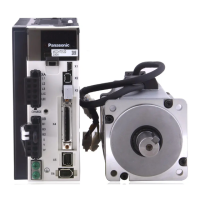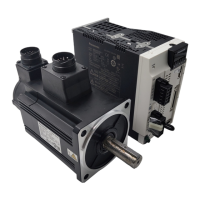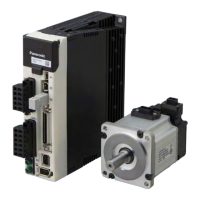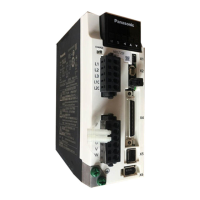- App. 37 -
Appendixes
Parameters for Time Constants of Gains and Filters: Related to Real Time Auto Tuning
* See page 38 in Appendix.
PrNo. Parameter
Value
Function
•
You can define the response characteristics of position
control. Higher the gain you set, quicker the in-position
time you can obtain.
•
To obtain the overall response of the servo system to-
gether with the above position gain, set this gain as
large as possible.
•
Integration element of the velocity loop. The smaller
the setting, the quicker you can reduce the velocity er-
ror to 0, after stopping.
•
The integration is disabled by setting this to 1,000.
•
You can set-up the time constant of low-pass filter(LPF) in 6 stages(0
to 5), which is inserted after the block , and which converts the en-
coder signal to the velocity signal.
•
The higher the value you set-up, the smaller the noise you
can obtain, however, it is usually recommended to use the
default value (4).
•
You can set-up the time constant of the primary delay filter
that is inserted to the torque command portion.
•
Use this function to suppress the oscillation caused by torsion
resonance.
You can set-up the amount of velocity feed forward at posi-
tion control. Position error becomes almost 0 while the mo-
tor runs at a constant speed, by setting this to 100%. The
higher the setting you make, the quicker the response you
can obtain with smaller position error, however, it may cause
overshoot.
•You can set-up the time constant of the primary
delay filter that is inserted to the velocity feed
forward portion.
• Use this function to reduce the over and under-
shoot of the speed, chattering of the in-posi-
tion signal.
10
11
12
13
14
15
16
17
1st position
loop gain
1st velocity
loop gain
1st speed
detection
filter
Feed forward
filter time
constant
(Reserved)
10 ~
2000
[50]
1 ~
3500
1 ~
1000
[50}
0 ~ 5
[4]
0 ~
2500
0 ~
100
[0]
0 ~
6400
[0]
1/s
Hz
*
ms
%
0.01ms
%
0.01ms
1st velocity
loop integration
time constant
1st torque filter
time constant
Velocity feed
forward
Unit

